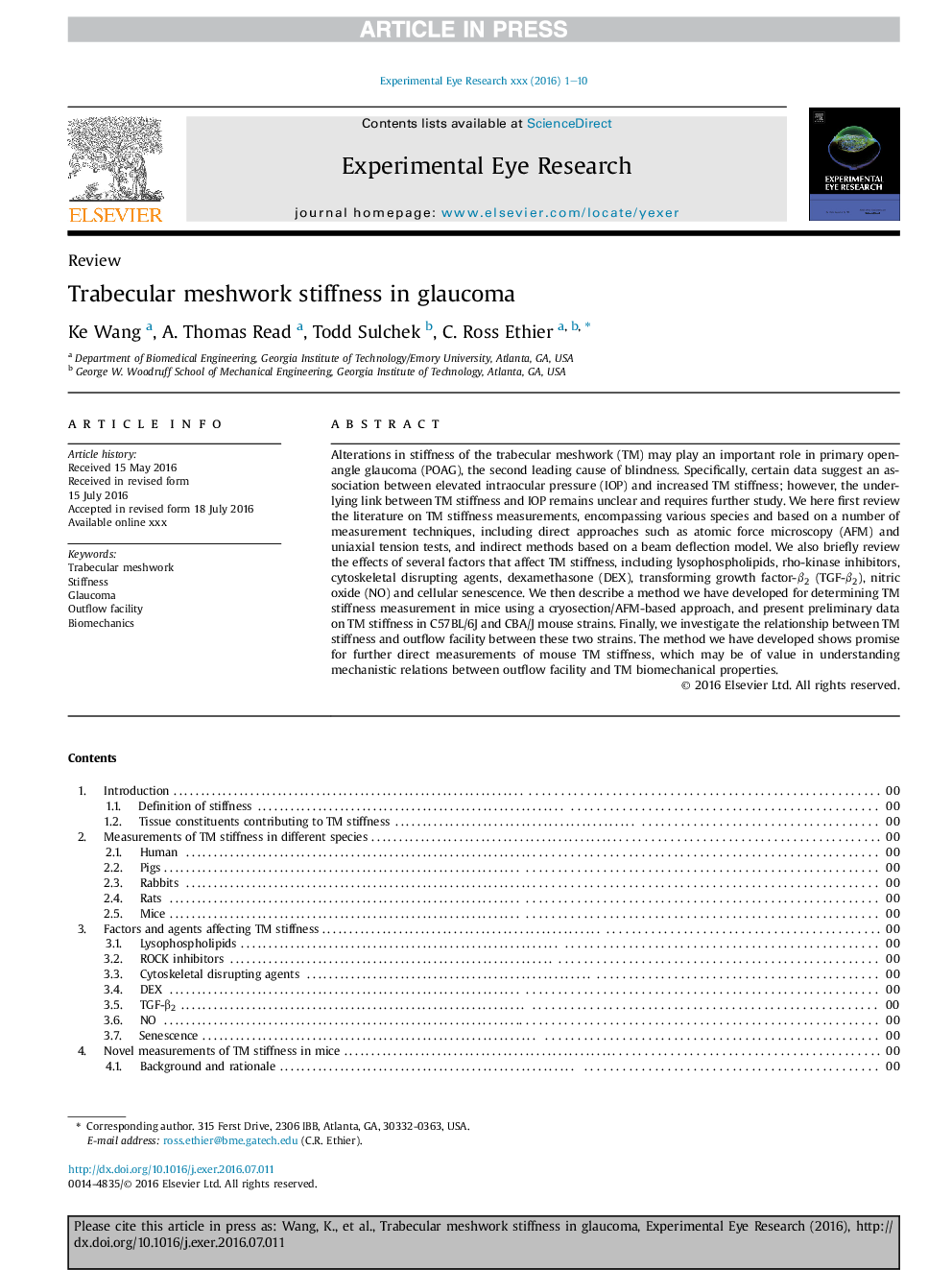| Article ID | Journal | Published Year | Pages | File Type |
|---|---|---|---|---|
| 5704103 | Experimental Eye Research | 2017 | 10 Pages |
Abstract
Alterations in stiffness of the trabecular meshwork (TM) may play an important role in primary open-angle glaucoma (POAG), the second leading cause of blindness. Specifically, certain data suggest an association between elevated intraocular pressure (IOP) and increased TM stiffness; however, the underlying link between TM stiffness and IOP remains unclear and requires further study. We here first review the literature on TM stiffness measurements, encompassing various species and based on a number of measurement techniques, including direct approaches such as atomic force microscopy (AFM) and uniaxial tension tests, and indirect methods based on a beam deflection model. We also briefly review the effects of several factors that affect TM stiffness, including lysophospholipids, rho-kinase inhibitors, cytoskeletal disrupting agents, dexamethasone (DEX), transforming growth factor-β2 (TGF-β2), nitric oxide (NO) and cellular senescence. We then describe a method we have developed for determining TM stiffness measurement in mice using a cryosection/AFM-based approach, and present preliminary data on TM stiffness in C57BL/6J and CBA/J mouse strains. Finally, we investigate the relationship between TM stiffness and outflow facility between these two strains. The method we have developed shows promise for further direct measurements of mouse TM stiffness, which may be of value in understanding mechanistic relations between outflow facility and TM biomechanical properties.
Related Topics
Life Sciences
Immunology and Microbiology
Immunology and Microbiology (General)
Authors
Ke Wang, A. Thomas Read, Todd Sulchek, C. Ross Ethier,
